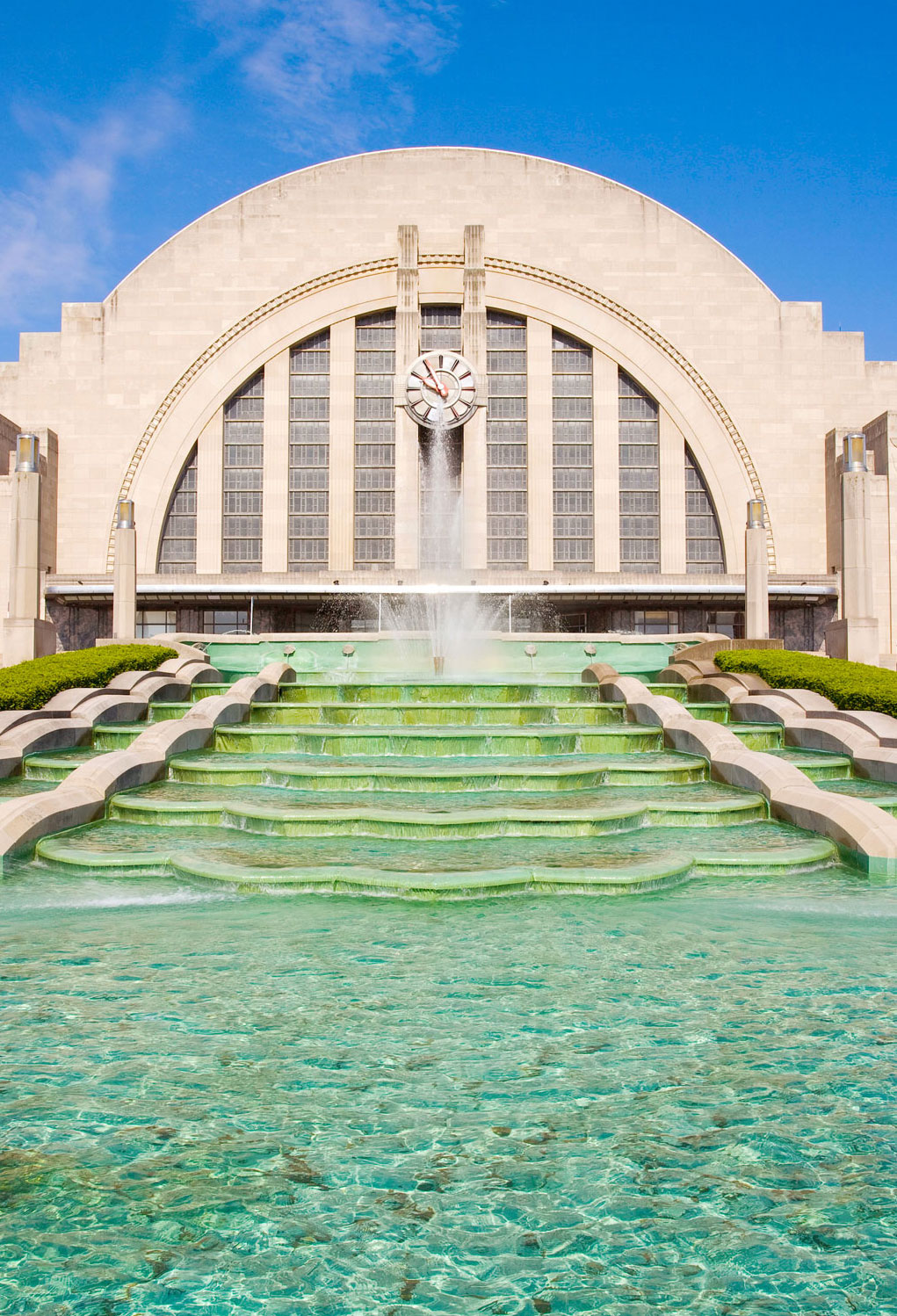In the post-World War I era, a new architectural design craze swept across America: Art Deco. Celebrated for its geometric shapes, pleasing symmetry, and metallic accents, the design style originally began in France, where it was referred to as “le style moderne.” Despite its costly materials, the Art Deco trend became popular in the U.S., and it accounted for much of the architecture built during the 1920s and into the Great Depression of the 1930s. Many of these buildings remain standing and are open to visitors today — here are seven stunning Art Deco landmarks architecture buffs should visit.
Union Terminal – Cincinnati, Ohio
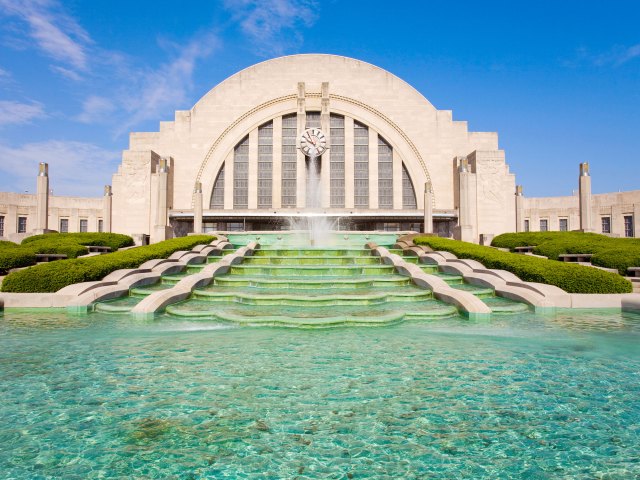
A masterpiece in Art Deco architecture, the Cincinnati Union Terminal was constructed between 1929 and 1933. Now a National Historic Landmark, it is considered to be one of the last great American railway stations to be built. The most famous feature of the terminal is its 10-story, half-domed limestone entrance, which was the largest in the world at the time of opening and remains the second-largest today. Although passenger service ceased in 1974, the railway station was revived in the 1990s as an Amtrak station. It also currently houses the Cincinnati Museum Center, home to a history museum, a children’s museum, and an OMNIMAX theater.
Civic Opera House – Chicago, Illinois
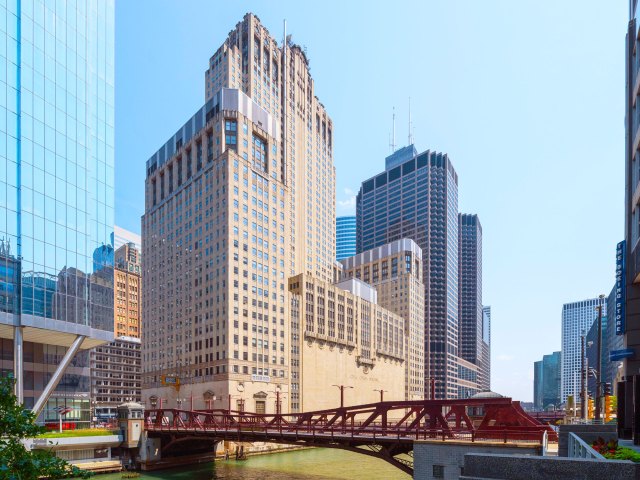
The Civic Opera House in Chicago, Illinois, has remained a shining example of Art Deco architecture since it was built nearly a century ago. Currently housing the Lyric Opera of Chicago, the building opened a mere six days after the 1929 stock market crash and has since been home to various opera companies. The building’s impressive Art Deco facade is constructed of limestone, with two wings flanking a 45-story tower. The interior showcases the geometric shapes and lines associated with classic Art Deco, while also incorporating touches of Art Nouveau in the Comedy-tragedy masks and cornucopias found near the entrances.
American Radiator Building – New York, New York
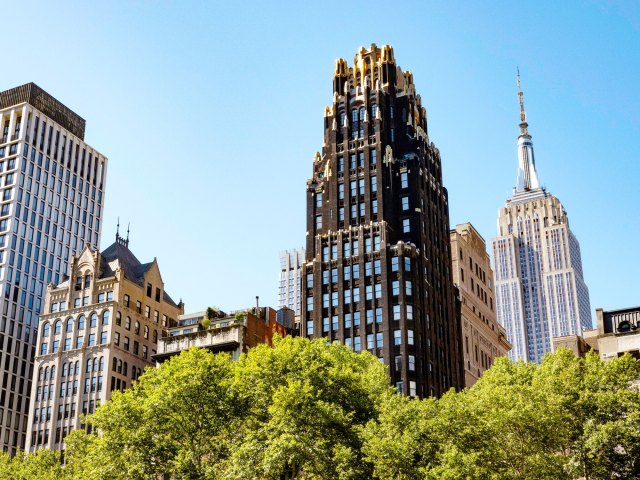
Constructed at the height of the Roaring 20s, the American Radiator Building is another remarkable example of Art Deco architecture. With its black facade, bronze accents, and Gothic pinnacles, the 23-story tower has been a midtown Manhattan landmark since it opened in 1924. The building is not just beloved by pedestrians passing by, but also famous creatives — artist Georgia O’Keefe was once so moved by the dramatic building that she painted a beautiful rendition of the skyscraper in a 1927 piece called Radiator Building at Night. Today, the skyscraper is home to the Bryant Park Hotel.
The U-Drop Inn and Cafe – Shamrock, Texas
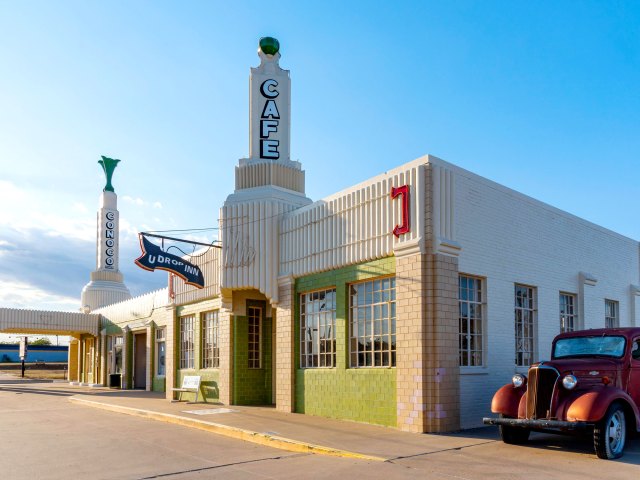
Located on the historic Route 66, a highway built in the 1920s to connect the Midwest and California, the U-Drop Inn and Cafe was once a well-known roadside stop — providing food, gas, and lodging to travelers. It was built in 1936 for $23,000 (equivalent to over $500,000 today), and the structure’s unique design — with its decorative towers, geometric details, and symmetrical facade — was a welcome addition to this small city in northern Texas. The building still stands today, operating as a visitor center, community center, and chamber of commerce office.
Paramount Theater – Oakland, California
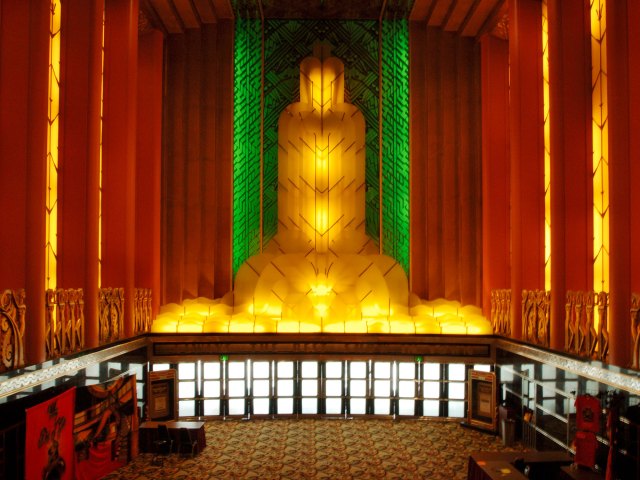
The Paramount Theater opened its doors in 1931 and has since been celebrated as one of the finest examples of Art Deco architecture in the country. Designed by Timothy L. Pflueger, a renowned San Francisco architect, the theater features intricate mosaic patterns, gold accents, and bas-relief sculptures that create a visually stunning interior. The design also includes individual work from various artists, including muralists, sculptors, and painters, a nod to San Francisco’s creative scene. Despite tough years at the onset, the Paramount Theater survived the Great Depression and remains open today, hosting events and speakers year-round.
Radio City Music Hall – New York, New York
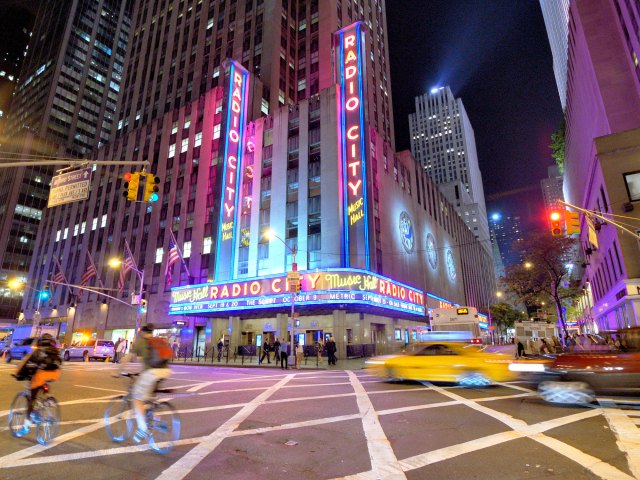
When Radio City Music Hall opened its doors in 1932, it became the largest indoor theater in the world. Nine decades later, the iconic Manhattan music venue still retains its title — and its unmistakable Art Deco style. Despite finishing the building in the early years of the Great Depression, its financier John D. Rockefeller Jr. ensured no corners were cut during the massive build. Radio City is home to the legendary Radio City Rockettes, and its interior features lavish design elements, including a four-story foyer, a 10,000-square-foot stage, and elaborate gold arches. Often touted as the “Showplace of the Nation,” Radio City hosts weekly tours and events.
General Electric Tower – New York, New York
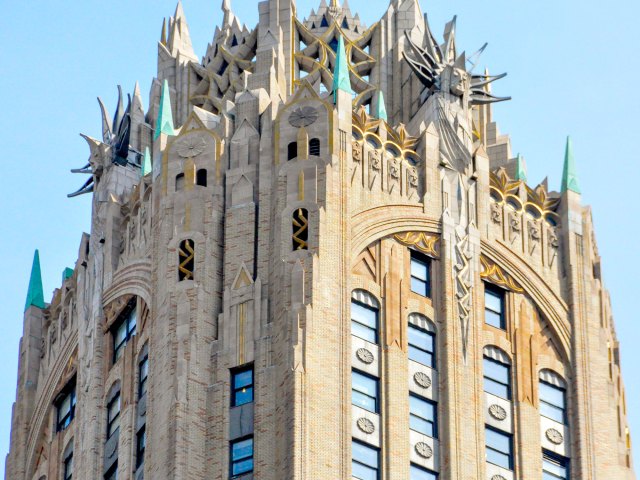
Considered to be one of the most impressive skyscrapers of its era, the General Electric Tower was completed in 1931. Designed by John W. Cross, the Art Deco tower was originally built for the Radio Corporation of America before being handed over to its parent company, General Electric. The towering facade was inspired by its radio roots, with a dramatic lightning bolt design meant to represent wireless communications, while the lobby features Art Deco-inspired patterns and arches. The landmark office building still stands at 570 Lexington Avenue in midtown Manhattan and is open to visitors.
More from our network
Daily Passport is part of Optimism, which publishes content that uplifts, informs, and inspires.






